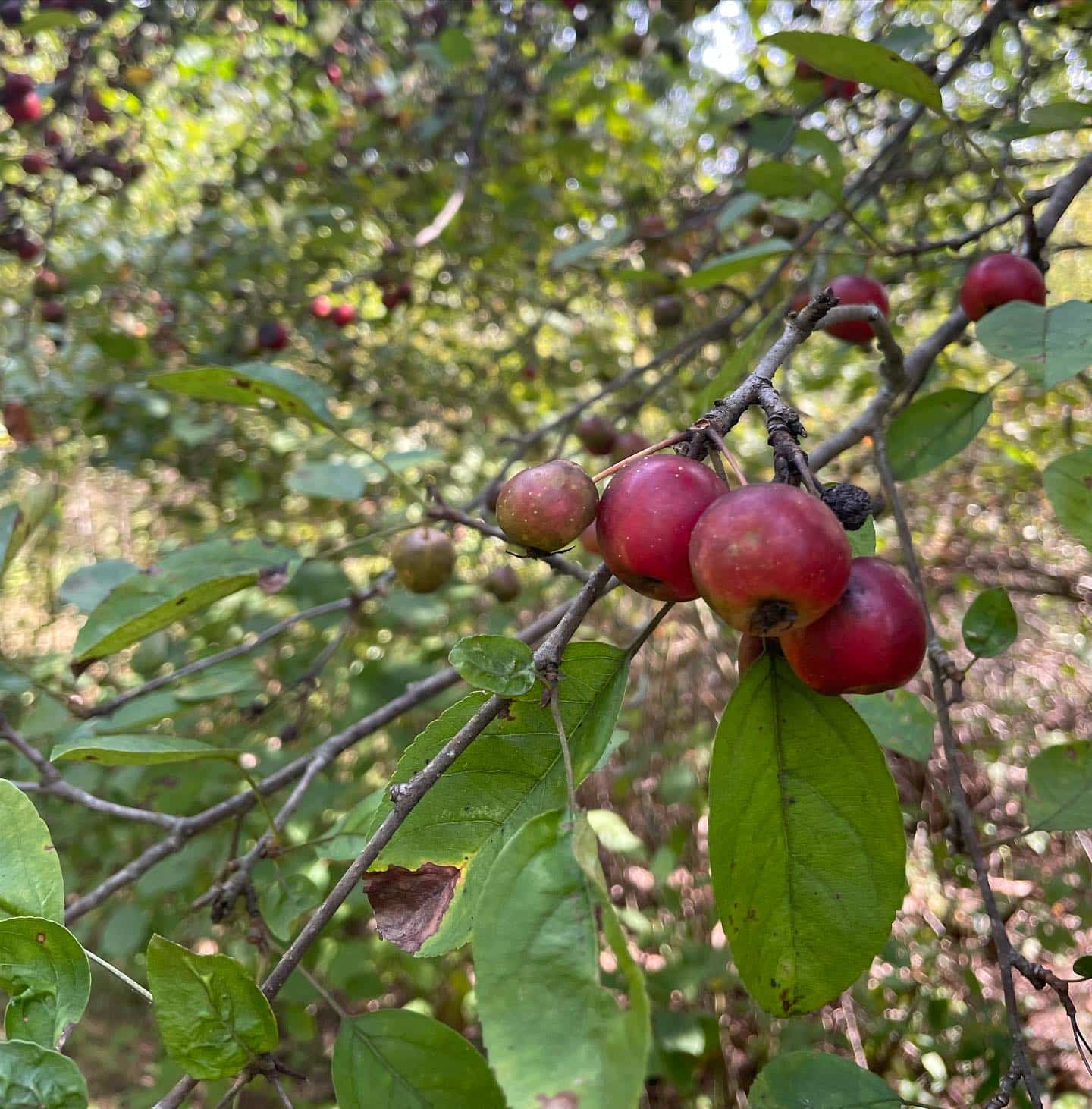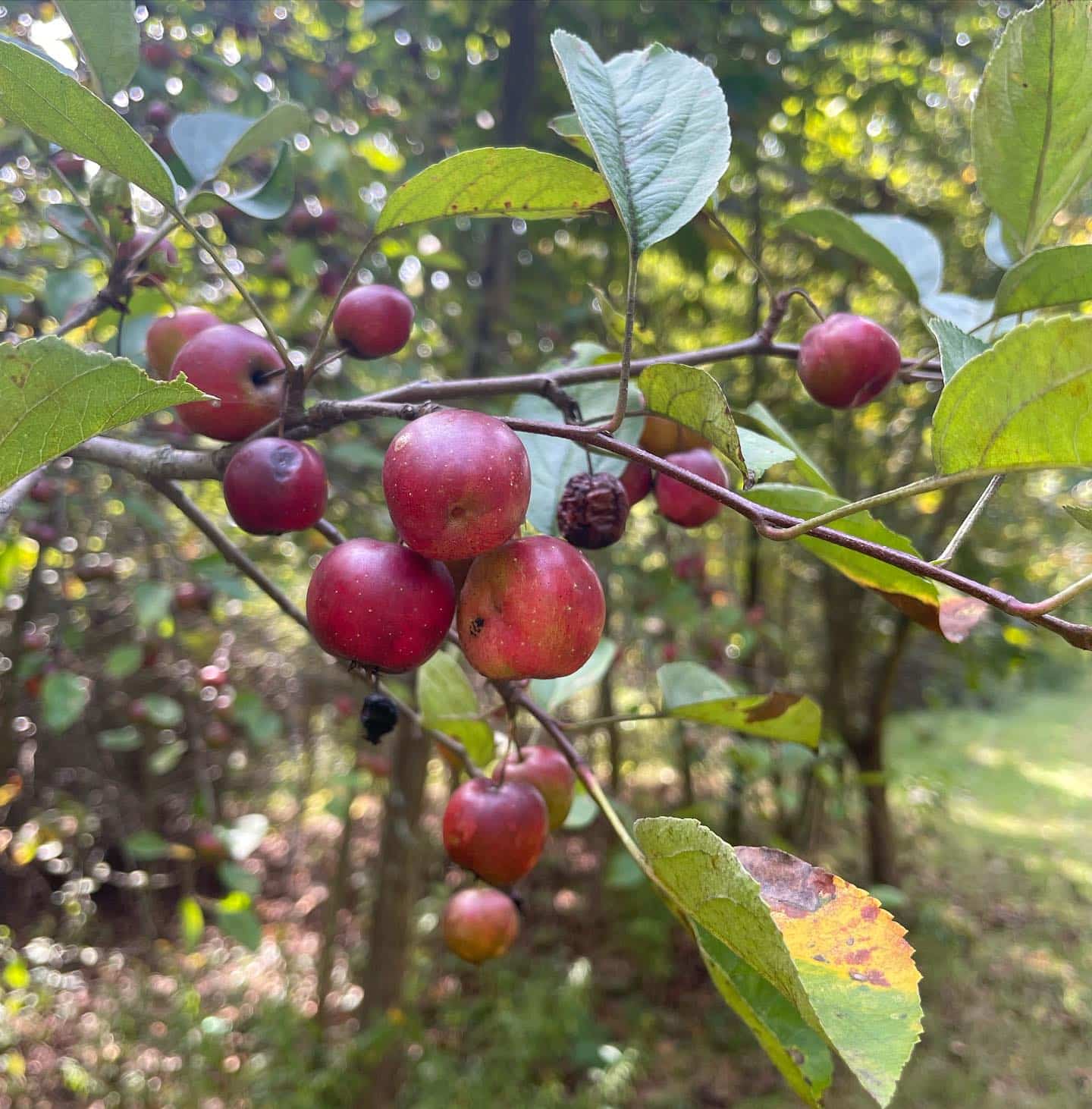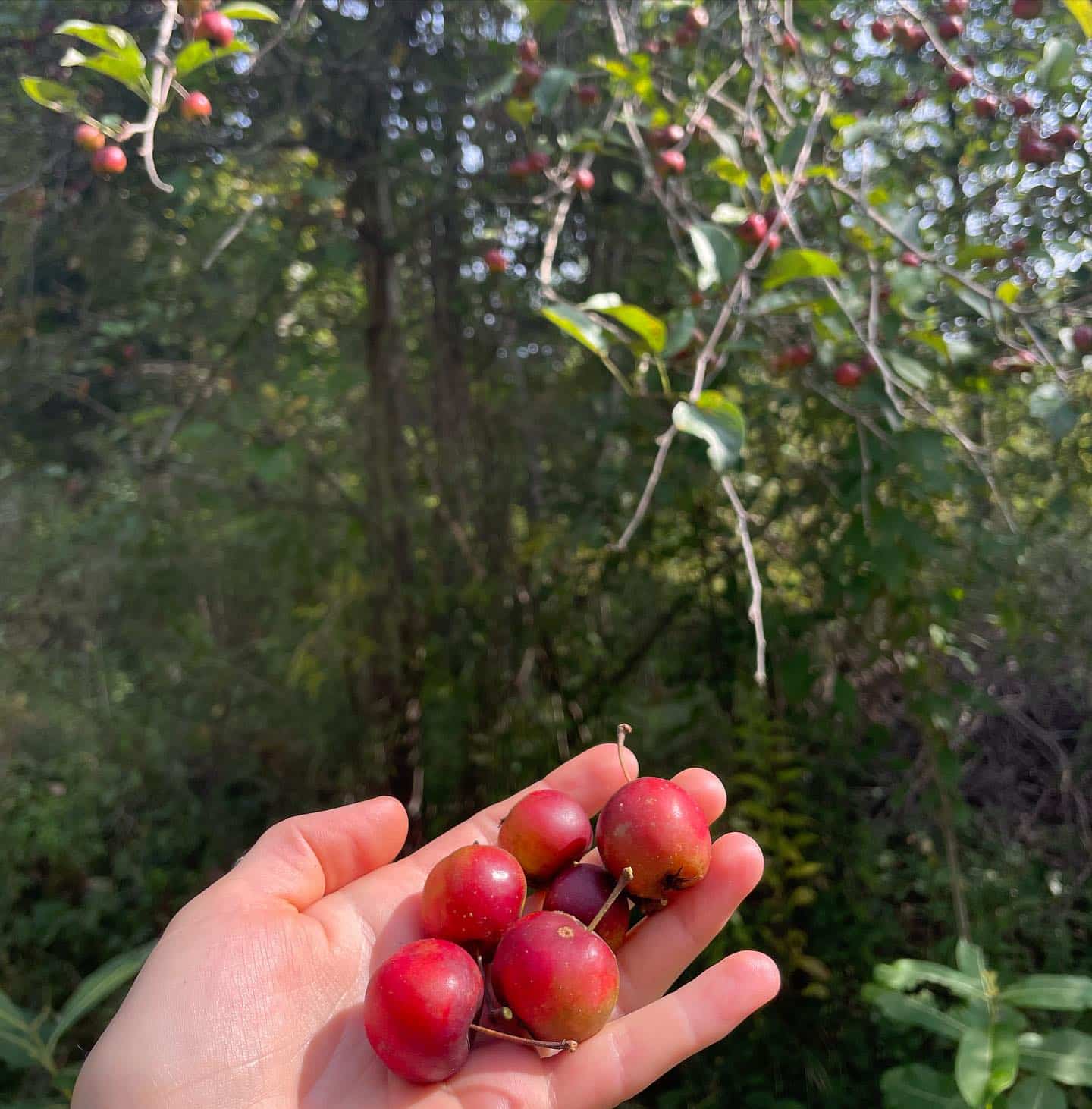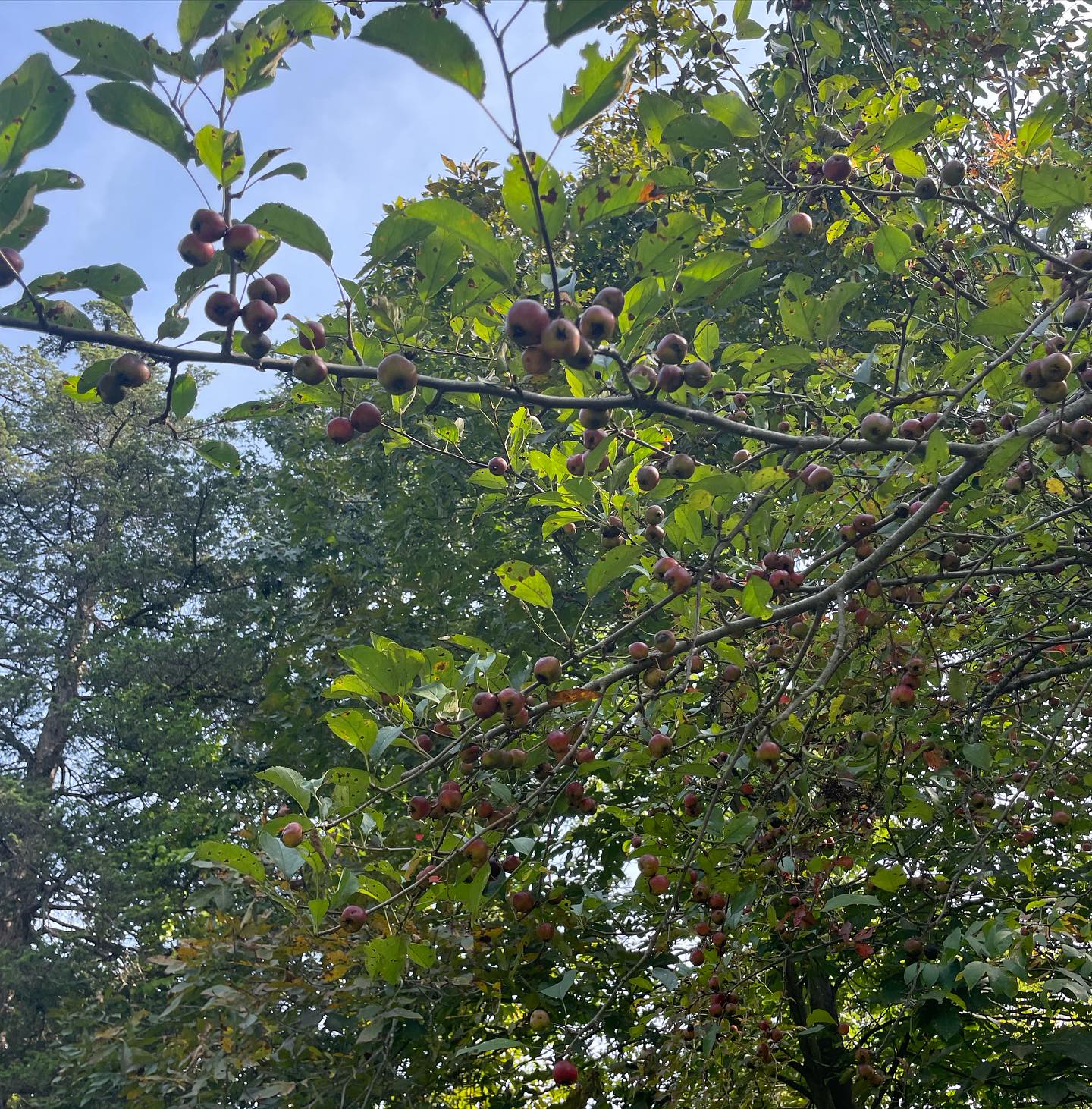Page Created by Connecticut Foraging Club
Upcoming Events | Meet the Instructors | Plant Archive | Mushroom Archive
----------------
Upcoming Events | Meet the Instructors | Plant Archive | Mushroom Archive
----------------
Wild Apples (Malus spp.) are apple trees that grew from seed. The apples are considered crab apples if the fruit is less than 2 inches in diameter.

There are over 40 species of crab apples across the world and 4 species that are native to the United States. Two of these species can be found in Connecticut, the Southern Crab Apple (Malus angustifolia) and the Sweet Crab Apple (Malus coronaria). Apple trees hybridize easily and there is a lot of variation in trees and fruit.

Apple trees have 5-petaled blossoms in the spring which can be red, white, or pink. The fruits ripen in the fall. Apples are ripe when the seeds are brown. Leaves are oval, serrated, and come to a point. Look for wild apple trees along the edges of woodlands.

Crab apples tend to be more sour than domesticated apples due to their higher malic acid content. They have a lot of pectin, which makes them a great fruit for making jam and fruit leather. The taste and texture of crab apples can range from awful to delicious. Be sure to avoid the seeds which have trace amounts of cyanide.

Crab apples are high in vitamin C, potassium, and manganese. They can be turned into apple sauce, apple cider vinegar, apple wine, or apple pies.
--
Written by Amy Demers, founder of the Connecticut Foraging Club. To learn more about foraging in Connecticut, check out our upcoming classes.






